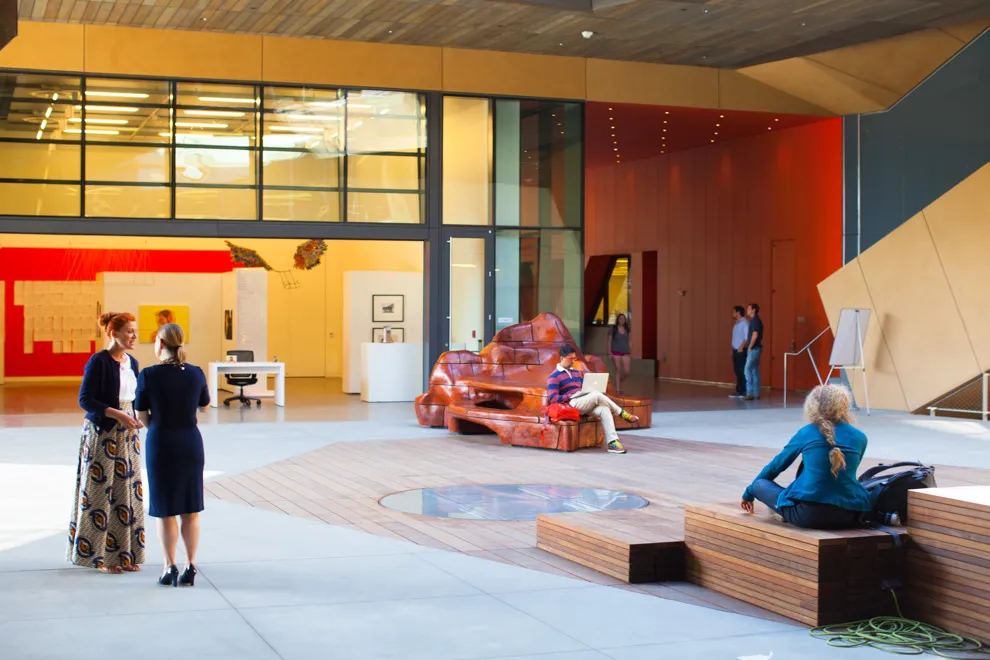
The McMurtry Building for the Department of Art and Art History hosted its formal opening reception Tuesday, Oct. 6, though the building’s galleries and classrooms have been accessible since Sept. 21. Named after its generous donors, Deedee and Burt McMurtry M.S. ’59, Ph.D. ’62, the McMurtry building is designed to encourage collaboration and coexistence between the disciplines of art and art history, as well as other areas of study.
The building was designed by Charles Renfro of Diller Scofidio + Renfro and includes 100,000 square feet of studio space, digital media labs, a sound recording studio, a library, a café, galleries and classrooms. The project took five years to complete.
In the opening remarks, Alexander Nemerov, department chair and Carl and Marilynn Thoma Provostial Professor in the Arts and Humanities, explained the purpose of the McMurtry building.
“The goal of the building is to vitalize the arts on campus,” he said.
The building is shared by two separate disciplines, art and art history, and the architecture embodies the diversity among and collaboration between the two. The portion hosting the art discipline is covered zinc, while the exterior of the art history section is clad in the traditional stucco of many of Stanford’s earlier structures. However, even the two materials are designed to interact and weave together, encouraging partnership.
“The two [sections] wrap around each other like DNA strands,” Renfro said. “The building fosters discourse between the two sides by pitting them against each other.”
Renfro highlighted several common spaces that serve to link the two departments, including the middle outdoor space, library and rooftop “sky court” balcony. The outdoor courtyard stairs also hosts a small balcony, which Renfro dubbed the “Pope Balcony or DJ Booth.” There are plans to host events, like Party on the Edge and speaker series, in this space for the whole Stanford community.
The McMurtry building was designed as a tribute to Stanford as a whole. The center courtyard was modeled after the open spaces and arched walkways of Stanford’s main quad.
“The building is already becoming a destination for avid students, as you can tell from the undergraduate bicycles overflowing the facility,” Nemerov said.
Renfro explained that the opening event served to hand the McMurtry building over to the Stanford community after five years of design and construction, on which he reflected.
“[The building] was intentionally designed to be porous,” Renfro said. “We want students to feel like this building is theirs.”
According to Renfro, 90 percent of Stanford students participate in art in some way at Stanford, through art history, music, photography or spoken and written word – to name a few. The McMurtry building creates a central space for students of all disciplines to explore and learn about arts of all kinds.
An earlier version of this story implied that the art and art history department was two separate departments instead of one. The Daily regrets this error.
Contact Sophie Stuber at sstuber8 ‘at’ stanford.edu.
